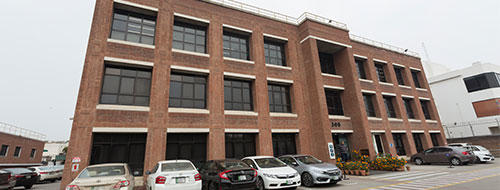Smart Guide for your 3 Year Old

Smart Eating
It feels just like yesterday when your baby was propped up on a baby chair as you coaxed food into their mouth. Now they are all grown up and want to eat independently on a separate chair at the dining table!
As babies grow so do their nutritional needs. At 3, your little one needs a balanced diet that ensures perfect Fats, Proteins, Carbohydrates, Vitamins and Minerals intake.
An interesting way to include all these food groups in your pre-schooler's diet is through attractive lunchboxes and menus. When food is more colourful and interestingly shaped your child is very likely to eat and enjoy the meal. For instance, try making triangular rotis! Macaroni and/or noodles with delicious colourful fresh vegetables can meet the teeth of a very hungry 3 year old with a lot of interest compared to your regular pasta. Feeding your baby the correct proportions and food types will ensure that your pre-schooler is happy and healthy.
Smart Growth
Your little bundle of joy is full of new surprises – expressing and talking about ideas that are novel. Your child will have specific nutritional requirements needed at this stage of development. In essence, smart nutrients for smart growth!
Smart Nutrients
Essential Fatty Acids [EFA] are healthy and necessary fats that are not produced by the body and must be obtained through diet. Studies have shown that EFA are important for the development of mental and visual abilities, especially during the early stages of growth. They are found in food sources like fish, vegetable oils and nuts, or specially enriched foods.
Iron
Iron is a mineral that plays an important role in transporting the oxygen in blood. In addition it plays a role in optimal brain and nervous system development and functioning as well as in strengthening the immune system. Children with iron deficiency anaemia often have learning and behavioural problems, therefore getting the right amount of Iron can improve your child's performance in sports and in school. Good sources of Iron include red meat, eggs, poultry, fish, almonds, spinach and legumes.
Which milk for Smart Growth?

NIDO 3+ is the only growing up milk with Prebio3, Nestlé’s unique blend of natural fibres and nutrients that contribute to your 3 year old’s physical and mental development as well as healthy digestion. It also contains Essential Fatty Acids and Iron for growth and brain development.
Smart Physical Development Milestones
3 years means that your child is officially allowed to run riot, jump from steps, climb and dance. Most children this age:
- Can use pedals on a tricycle.
- Balance themselves very well and can walk and run freely.
- Love to play with water and splash their time away in the pool
or tub. - Love playing with the ball and are quite good at rolling or bouncing the ball. Catching, however, is still quite a task.
- Love climbing ladders and trees.
- Stand on one foot for several seconds and can run on their tiptoes.
- Eat with a knife, fork and spoon.
- Can use the toilet, wash up and brush teeth on their own.
- Can wear own shoes without tying laces.
- By the age of 4, children are also able to hold the pencil correctly and cut with scissors.

